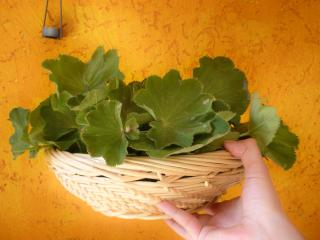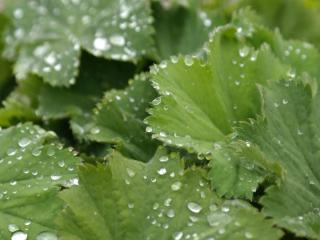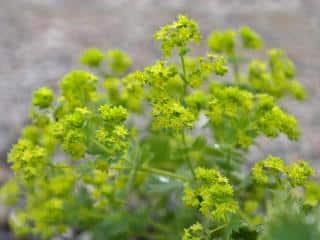

Antioxidant, decongestant and luteinizing, the leaves of the lady’s mantle are filled to the brim with therapeutic virtues. A plant of the Rosaceae family, lady’s mantle is also called “lion’s foot”, “Our Lady’s cloak”, “dew-catcher”, or “plant of the alchemists”. Its scientific name “Alchemilla“describes the green stem with reddish hues, and its circular leaves with serrated forms. Each fuzz-covered leaf has seven to eleven lobes.
 The origin of the name “lady’s mantle” goes back centuries and comes from alchemists who used the dew from its leaves in the preparation of the philosopher’s stone. They considered it a celestial water.
The origin of the name “lady’s mantle” goes back centuries and comes from alchemists who used the dew from its leaves in the preparation of the philosopher’s stone. They considered it a celestial water.
Although lady’s mantle was discovered in the Middle Ages, it was in the early 20th century that its decongestant effects were proven by Johann Künzle, a Swiss priest and herbalist. They knew it eased premenstrual pains and helped prepare for childbirth.
Over time, therapists have revealed the astringent, healing virtues of this plant. Thanks to its action that’s similar to that of progesterone, lady’s mantle is a luteinizer. It’s also an anti-hemorrhagic, a healer, an antioxidant, and an anti-diarrheal.

Flavonoids are present in lady’s mantle. This medicinal property in its leaves helps fight heavy legs by promoting blood circulation. It’s also a very effective antioxidant. It also contains salicylic acid, phytosterols, saponins, and palmitic and stearic acids. Lady’s mantle is an astringent and calming plant. It also has the following properties:
Lady’s mantle is also used in the preparation of medications for leucorrhea. Its essential oil is found in oral hygiene products, particularly for treating canker sores and stomatitis.

Even though its health benefits are well-documented, it’s worth noting that lady’s mantle should be avoided in certain cases. It’s contraindicated for people on oral contraceptives, and those prone to gastritis or ulcers.
It’s a plant that can cause or even promote constipation if taken for a long period or in high doses. People at risk of thrombosis or phlebitis, and those undergoing treatment with anti-vitamin K should also avoid consuming lady’s mantle. As a precaution, ask your doctor.